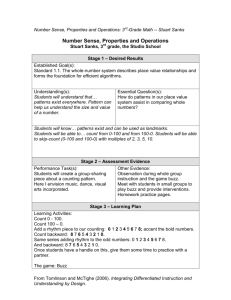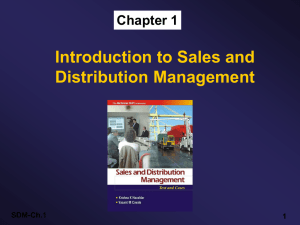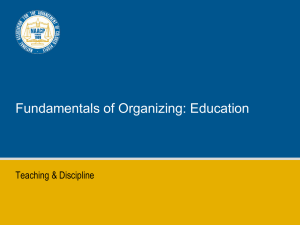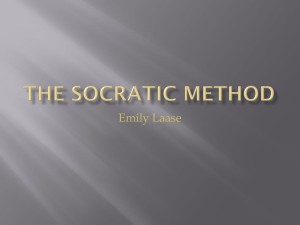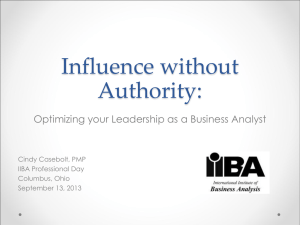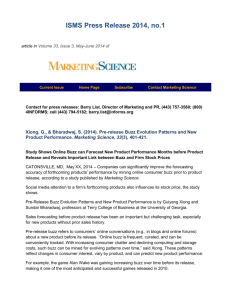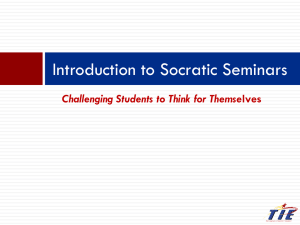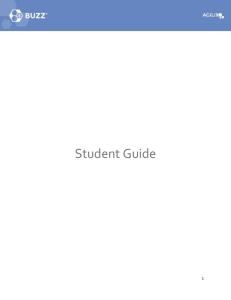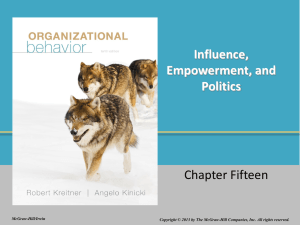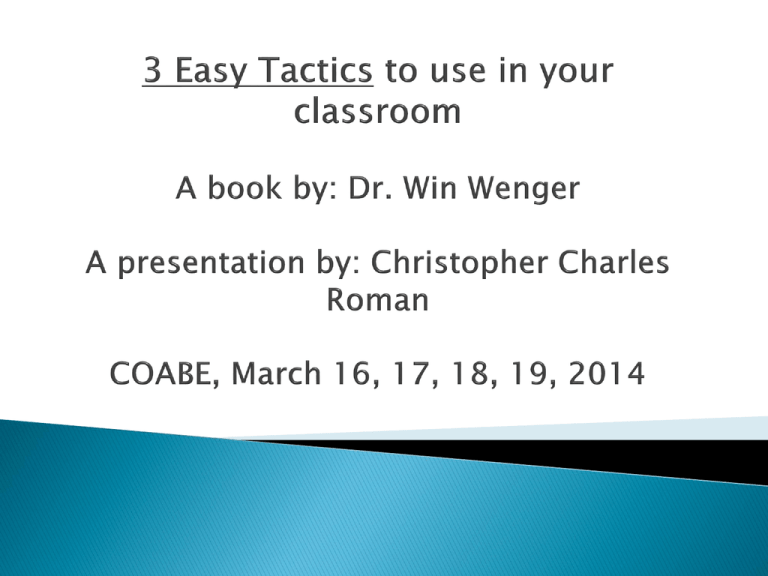
much less in a year or two. Imagine being an
administrator, program director, instructor, or
parent with the need to post-test or increase
achievement for those you serve, at a higher
level than they currently are, with greater
understanding and retention, while giving
yourself, as the instructor or presenter, a
break. What are three simple things you could
do to achieve this?
Together, we’re going to explore the answer.
PhD in Education in 1972
Continued his research in intelligence, creativity,
and teaching methods
1975 “How to Increase Your Intelligence”
Has published over 55 books
Co-author of the bestselling book, “The Einstein
Factor”
He is recognized around the world as a leader in
both creative problem solving and accelerated
learning and has taught workshops as far away
as Japan and South Africa for many years.
Global Career Development Facilitator
Taught for seven years at Goodwill of
Southwestern PA
ABE, GED, and GED Medical Pathway prep
classes
Other: home schooled, tutored, private music
instruction
Peer Mentor Coach for state of PA
Degree in Music Education from Penn State
Project Renaissance trainer (Dr. Wenger’s
certification)
OUTCOME: Participants will gain practice using
the 3 Techniques
WHAT: Background of where 3 Tactics developed
from
WHY: Principles the 3 Tactics are based on
Modern Socratic practice exercise
HOW: 3 Tactics themselves
Implementing the techniques in a lesson plan
Bonus (if time): Lesson Planning using the sister
book: Dynamic Teaching by Harman Benda and
Win Wenger
Follow up webinar
Be curious
Be open-minded / suspend any preconceptions
Participation encouraged
◦ Turn to the people around you and say:
Name
Where you are from
Why you are in this session
St. Andrews school in Buffalo, NY introduced
Dr. Wenger’s ideas from his book 3 Easy Tactics
to the school staff 6 years ago. The scores on
the standardized TerraNova (pub. McGraw-Hill)
showed, on average, 4.4 years in grade level
performance improvement.
Indiana
Georgia
More on the way…
(Now
pay attention, because we’ll
be checking your understanding
of all this shortly.)
First appeared in ancient Greece.
“Sophists” or “teachers” gathered people
◦ “Sophists” would use people to further develop their
own perceptions
◦ “Sophists” started to, in turn, develop the listeners’
perceptions (Socrates)
Used for 2200 years
Lead most of its practitioners to believe that all
knowledge and understanding are already
within us. It simply needs to be “drawn out,”
which is the meaning of the word “educare,”
where the word “education” came from
◦ Aristotle, Plato & later DaVinci, Galileo(Renaissance
period)
What happened? Didactic!
The classical Socratic Method
◦ A few students at a time
◦ Very specific questions that led to a “learning.”
deduction – taking generalization that lead to
specifics
Modern day versions of the Socratic Method
(maieutic Socratic Method)
◦ Many students
◦ Very specific questions that led to a “learning.”
induction – taking specifics and then generalize
it to the individual and their experiences
This leads to some basic principles that much
of Dr. Wenger’s work is based on:
Law of effect (a.k.a. the first law of psychology)
You get more of what you reinforce
Principle of Description
What you detail aloud to a meaningful listener,
while you are examining what you are detailing, you
discover more and more about it, while noticing
how everything relates to everything else to a
greater or lesser degree.
Principle of Growth and Development
Learning, physical growth and development of the
brain, proceeds best as feedback on one’s own
activities
Helps support the statement: “All learning is
by association” (Remember “contextualized
instruction?”)
All learning is by associating it with previous
experiences and concepts. Since everyone is
different, it makes sense to help students make
their own associations with the material.
“We are going to break into mini “buzz”
sessions using the “dynamic format.” Pair up
with someone, or maybe form a group of 3.
o Buzz sessions (a form of the Socratic Method)
2 (or so) minute speaker sessions – each on person has the
floor for 2 (or so) minutes for them to fully express their
answer and then switch. No interruptions. It is NOT a
conversation.
I’ll call out “switch” and if you haven’t switched speakers yet,
please do so.
Sometimes we when we are talking, we filter out other
conversations that don’t have anything to do with what we are
saying. Therefore,
o Dynamic format (water glass rules):
1 ding = 30 second warning, wrap up your last statements
3 dings = stop immediately – stop talking and wait for
instructions
(if 100+ people, can use the viral hand raising- like the Boy
Scouts)
(MODEL)
What, to you, was the most interesting or
important point made so far? What makes
that the most interesting or important point?”
Reminder: There are no right or wrong
answers.
What, to you, was the most interesting or
important point made so far? What makes
that the most interesting or important point?”
Reminder: There are no right or wrong
answers.
Decide who will go first and BEGIN.
The Planned Question
Analyze issues more in-depth.
Instant Replay
Used for reviews.
Beginning of class to review previous
material.
End of class to review the day’s materials.
The Highlighter Question (we just did this)
A productive pause in the action.
From the book –
When to use: When your lesson is built
around a key issue or point.
Main Use: Climax of a lesson to make all of
its contents memorable, meaningful,
appreciated and motivating.
Secondary Use: To develop the thinking,
perceptual, reasoning, social, and language
skills of your students.
Third Use: To provide the teacher with a
respite and chance to re-group.
It helps to develop a preliminary understanding
into a question. Students then “buzz” on the
question.
Can be at the beginning of a lesson to introduce
a topic or lead to the main issue.
It can then lead into a more challenging question
which can be or can lead into the main issue.
More than doubles the long-term memory and
value of the lesson
Can use in conjunction with the other techniques,
or by itself.
Buzz session – What could have been some
planning questions I could I have used it this
was solely a class lesson, instead of a
presentation?
(optional) Buzz session – “What, for you, was
the most important point of the planned
question, and what made that the most
important point for you?”
From the book –
When to use: Whenever the teacher likes, on the spur
of the moment, to highlight any question or issue. Or
use to gain respite and/or to regroup in mid-lesson.
Main Use: To underscore any point that the teacher
wants to make in the contents of the lesson, or to
give the teacher room in which to breathe, regroup,
or to observe his/her students in action.
Secondary Uses: To develop the thinking, perceptual,
reasoning, social and language skills of your
students, and to give teachers a quick easy respite
while continuing students’ learning-withunderstanding.
The question should focus attention on the
key point that you want to emphasize.
It should be a question which they can relate
to fairly easily to their own experience or
prior understandings. You can challenge
them more as time goes on.
It should be an open-ended question that a
discussion may arise from.
“Buzz” – this causes the students to apply
their own experiences and perceptions to the
lesson.
(From page 17 of 3 Easy Tactics): “What is
one of the more important points you want to
teach in your next class or next lesson?
Please brainstorm a variety of question you
could ask which your students can fairly well
answer and get into discussion over with each
other. Pick your one best “zinger”.” Share with
a partner. Share with the group.
“What, in your experience, does the highlighter
question somehow remind you of? Why does
that point remind you of that experience?”
From the book –
When to use: For just a few minutes at the end of the
lesson [or at the beginning to review a previous
lesson].
Main Use: A method for reviewing lesson contents.
Certainly everyone here appreciates the value of
reviewing so the learner absorbs more for longer.
What’s different is how much more [you retain] for
this review method in contrast to other review
methods, and how easy and enjoyable this particular
tactic is for both the teacher and the students.
Second Use: To develop the thinking, perceptual,
social reasoning, and language skills of your
students.
Have 10 or so minutes at the end of a lesson
to use this technique.
Ask whatever of these (or another question of
your creation) is most appropriate:
[see next slide]
The last question may be the best, especially
initially, because it encourages students to
make connections with their own
experiences, and there are no wrong answers.
It is recommended that you write whatever
question you choose on the board.
“What are some of the many ramifications of the
main point in this lesson?”
“What main point in this lesson do you think that
you most need to give further attention to, and
why?”
“What are some of the many ways you think that
the various points in this lesson relate to one
another?”
“What in your experience does the main point of
this lesson somehow remind you of? And can you
tell why that point somehow reminds you of that
experience?”
Start with: “Tell the person next to you your
answer to this question…”
If students object to “buzzing” at first, you can
start with having them write it out before verbally
sharing it.
Move among the students to make sure they are
participating, on task, and listen for how they
received the lesson and what you said.
Using a chime or another signal, if needed,
making sure they switch who is talking by saying,
“Finish that thought (statement, sentence, etc.),
but then switch roles so your partner can answer.
Please continue now.”
Some students don’t like to speak “on the spot”
with these questions. You can also have them
write the answer first before they share with
someone else.
Please write the answer to the following
question. Then we will share.
“What are some of the ways you can use
instant replay in your job, in your position,
whether you teach or not? How could that
change your perception about things?”
Instant Replay question (with buzz session):
“How can you use each of the 3 questions in
your class or in some other area of your life?”
Lesson Planning / Incorporating 3 Easy
Tactics
Standard Lesson Plan (see handout)
1.) Determine what the main point is.
2.) Turn that point into a question.
3.) Determine what the students will need to know to successfully
answer the questions.
Example (geometry lesson):
Planning Question:
“How could understanding how to calculate how much “space” things take up be
helpful? Why?”
Highlighter Question:
“If you were painting a surface and there was some object, like a window, how would
that effect your finding the surface area?”
Instant Replay Question: [pick one of the five listed questions]
Repeat for any other objectives.
Tip: Start with questions that anyone is more than likely able to answer. They
should be able to draw from their own personal experience.
3 Easy Tactics Lesson Plan (see handout)
“Buzz” on:
“How, for you, did adding these techniques
change the lesson (make it different)? ”
Group participant discussion:
“How were they added?”
(follow example from presentation)
-in small groups
-“Think of a lesson you’ve taught or could
teach, and think of one of each of the questions
you could include as part of the lesson.”
-share with class (one representative or
group presentation)
show pages from book
Thoughts / Comments
“Buzz”: “What, for you, was the most important
point of this presentation, and what made
that the most important point for you?”
o -share with group
The most important point to me.
In addition to emailing anything in particular you
would like me to go over in the webinar, let me
know at least one way your used one of the tactics.
According to researchers, 90% of what you “learn”
in a lecture, class, or presentation is forgotten,
most within the first couple of hours. Certain
learning methodologies, including 3 Easy Tactics
and the Socratic Method, change that.
Challenge: Use at least one tactic with something
from this conference, AND take these learnings
with you.
www.WinWenger.com
Christopher.Roman@goodwillswpa.org
Follow me on Facebook (Christopher Charles
Roman) and continue the discussion:
Leave feedback on what you think.
Copyright © Christopher Charles Roman 2014
All Rights Reserved. No part of this document
may be reproduced without written consent
from the author.


